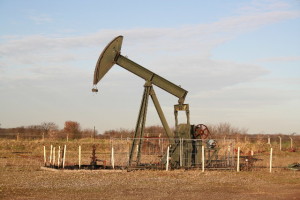
By Seren Nurgun, Staff Writer for Save The Water™ | May 27, 2016
Increasingly over the past decades, the public has scrutinized the human and environmental impacts of traditional and unconventional oil and gas operations in the United States. Recent years’ public frustration and scientific research focused on possible water contamination in West Virginia and Pennsylvania related to the expansion, respectively, of directional drilling and hydraulic fracturing (fracking) to retrieve oil and natural gas. Located in the Appalachian Basin and most of Pennsylvania, the Marcellus Shale has been and continues to be a rich source of oil and natural gas.2
Studies Confirm Public’s Fears
In West Virginia, Wolf Creek is just one example of water contamination fears being substantiated by studies. A team from Duke University conducted a study and found elevated levels of chloride, bromide, manganese, strontium, and barium, which are all known to exist within fracking wastewater, in a touristic waterway known as Wolf Creek in West Virginia.1 Another study, completed by a team from the United States Geological Survey, found elevated levels of endocrine disrupting chemicals (EDCs) also at Wolf Creek.1Local worries of possible fracking wastewater leaching occurring from nearby wells prompted these studies.1 Even when the data is collected, other elements and considerations complicate the system’s management.
Several Factors Prevent Easy Management
Various factors contribute to the current complex state of affairs with unconventional oil and gas operations. The separation of land and subsurface mineral rights are known as a split estate. Split estates are controversial because landowners who don’t have mineral rights lack control over the fate of their land and air.3 Even the mineral rights owners who receive payments usually do not know the true impacts of fracking on their lives. Furthermore, each state determines compensation for damages done to a property.
Additionally, water and noise pollution could be byproducts of shale gas drilling processes. The necessary disposal of large volumes of wastewater is insufficiently assessed and regulated.
The most significant contributing factor is the possibility of surface and groundwater contamination with endocrine disrupting chemicals (EDCs) used in drilling and fracking. The EDCs add to radioactive compounds and heavy metals freed from underground during the process.5 These pollutants can endanger life in the water and ecosystems, as well as human health. More specifically, EDCs have been shown to affect multiple functions in the human body, including the reproductive system, physical growth, and the immune system.1 Although scientists have collected data from the affected areas, there is a lack of intensive studies in each state to discover the possible impacts of developing oil and natural gas retrieval technologies on surrounding surface and groundwater.
Endocrine Disrupting Chemicals and Humans
According to Snyder et al., there are three categories of endocrine disrupting chemicals (EDCs). They include compounds that mimic or block natural estrogen, compounds that mimic or block natural testosterone, and compounds with direct or indirect effects on the thyroid.6 For over 70 years, scientists have been researching the effects of EDCs on various organisms, including observational studies on frogs, sheep, cheetahs, alligators, and fish.
Because experiments on humans are not possible, scientists acknowledge a lack of official data describing exactly how EDCs affect humans. Based on historical data, however, some scientists have hypothesized that a decrease in sperm quality and quantity over the past 50 years might have been caused by EDCs in the environment. Other scientists have theorized that increases in breast, testicular, and prostate cancers can be attributed, at least in part, to EDCs. Some endocrine disrupting compounds that humans can potentially encounter include perchlorate (found in fireworks, matches, and more), synthetic estrogen diethylstilbestrol (used in agricultural production), and alkylphenol polyethoxylate surfactants (used in wastewater treatment plants). The majority of scientists in this field believe more research and data is necessary to better understand the details of potential short-term and long-term effects that EDCs may have on humans.
Steps for the Future
On a positive note, some cities and counties have been revising existing ordinances to include local fracking waste bans. Cities and Counties remain positioned to investigate any party that may be responsible for any pollution or contamination that results from negligence. Next steps include additional long-term monitoring and data dissemination in order to ensure greater efficiency and fewer health and safety risks.4 Full protection from potential devastating effects would require a systematic approach to problem solving through holistically considering relevant scientific, social, and legal implications involving all stakeholders of oil and shale gas production systems.
References
- Alejandro Davila Fragoso. April 15, 2016. “As Fracking Chemicals Reach A Creek Companies Fight Against A Fracking Waste Ban.” ThinkProgress. http://thinkprogress.org/climate/2016/04/15/3768123/west-virginia-creek-fracking-pollution/
- Marianne Lavelle. January 14, 2015. “New – and worrisome – contaminants emerge from oil and gas wells.” The Daily Climate. http://www.dailyclimate.org/tdc-newsroom/2015/01/fracking-fluid-waste
- Kimber Ray. April 13, 2015. “Digging Under the Surface: West Virginia’s Fracking Boom.” Appalachian Voices. http://appvoices.org/2015/04/13/digging-under-the-surface/
- R.D. Vidic et al. May 17, 2013. “Impact of Shale Gas Development on Regional Water Quality.” Science, 340. DOI: 10.1126/science.1235009
- ScienceDaily. April 7, 2016. “Oil and gas wastewater disposal may harm West Virginia waterways: Scientists draw conclusions after study at natural gas, oil extraction wastewater disposal facility.” www.sciencedaily.com/releases/2016/04/160407150800.htm
- Shane A. Snyder, et al. July 6, 2004. “Pharmaceuticals, Personal Care Products, and Endocrine Disruptors in Water: Implications for the Water Industry.” Environmental Engineering Science, 20(5). doi:10.1089/109287503768335931

